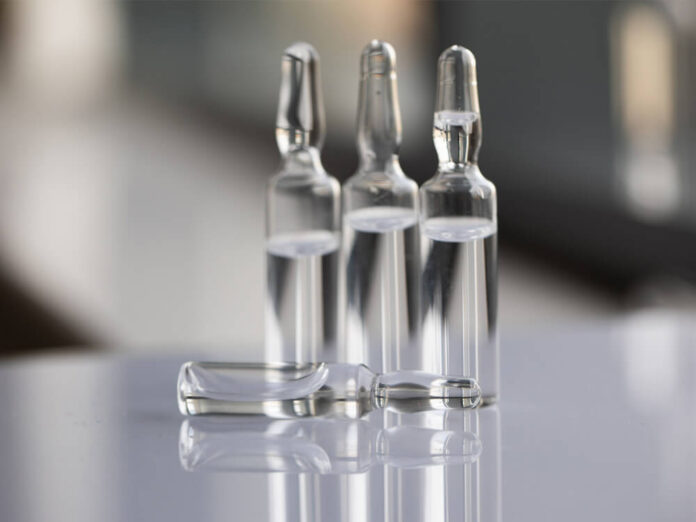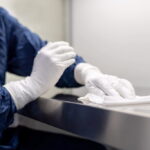Why Ampoules Matter in Pharmaceuticals
Ampoules play a key role in the pharmaceutical industry, fulfilling a range of functions. Firstly, they allow for precise dosing of medicines. Each ampoule contains a single dose of a medicine, minimizing waste and ensuring dosage accuracy, a vital aspect especially when dealing with potent drugs where the difference in a small amount could have significant implications.
Ampoules are also vital for protecting sensitive medications. Certain pharmaceutical substances degrade upon exposure to environmental elements like oxygen, moisture, or bacteria. The sealed nature of ampoules safeguards these substances, maintaining their effectiveness and extending their shelf life. This makes ampoules integral to ensuring that patients receive a medication that is both safe and effective.
What is an Ampoule?
An ampoule is a meticulously designed small, sealed vial typically made of glass or plastic. The sealing process involves melting the thin top open end of the ampoule, creating an enclosed environment impervious to external factors. This is essential for medicines requiring high degrees of protection.
Ampoules are a marvel of design and engineering. The choice of materials, the specific shape, and the sealing process are all carefully calibrated to provide optimal protection for the substance inside. This intricate level of detail explains why ampoules are trusted with some of the most critical medications in the pharmaceutical industry, including vaccines and biotech drugs.
Why Bother with Leak Testing?
Leak testing, a vital part of a leak test procedure in pharmaceuticals, is essentially the quality and safety gatekeeper in this industry. Consider the analogy of a fortress with a tiny, unnoticed crack in its wall. Over time, external elements could seep through this crack, compromising the fortress’s integrity. Similarly, even the tiniest leak in an ampoule can compromise the sterility and purity of the medication it contains.
The implications of leak testing go beyond just ensuring the quality of the medication. It directly impacts patient safety. Contaminated or degraded medications can lead to ineffective treatment or, in worst-case scenarios, harm the patient. Hence, leak testing is a critical control point in pharmaceutical manufacturing, ensuring every ampoule that reaches the market is worthy of the trust placed in their medications by patients.
Leak testing is also a kind of insurance for pharmaceutical companies. Product recalls due to contamination can be expensive, not just financially but also in terms of reputation. A rigorous leak test procedure in pharmaceuticals can identify faulty ampoules before they leave the manufacturing facility, saving companies from potential lawsuits and the associated loss of trust among healthcare providers and patients. In this sense, leak testing becomes a non-negotiable part of quality assurance in pharmaceutical manufacturing.
The ABCs of Leak Testing
Let’s go through the steps to implementing a leak test for ampoules:
Recognize the Value of Leak Testing: This is the first and most vital step. Understand that leak testing is not just about quality control, it’s also about patient safety and the reputation of your pharmaceutical company.
Get the Right Equipment: Next up, you need an ampoule leak tester. Make sure to pick a tester that best suits your needs, and consider things like sensitivity, efficiency, ease of use, and reliability.
Learn the Ropes: Before you start, familiarize yourself with how the tester works. It usually uses the differential pressure method to detect leaks. Be aware of its limitations and ensure you’re using other quality control measures as well.
Kick Off the Testing Process: Now, you’re ready to start testing. Make sure to clean the ampoules, arrange them efficiently in the tester, and calibrate the tester for accurate results.
Understand the Results: The tester will point out any ampoules with leaks, which should then be discarded. High rates of leaks could indicate a problem with the sealing process that needs to be fixed.
Make Necessary Changes: If you come across any leaks, it’s time for some action. This could involve tweaking the sealing process, adjusting the manufacturing parameters, or even replacing faulty equipment.
Enhancing Ampoule Integrity through Leak Test Procedure in Pharmaceuticals
A leak test procedure in pharmaceuticals is a crucial step in ensuring ampoule integrity. Companies like Seal-Check offer innovative leak detectors to ensure product quality and safety. These detectors help identify even minuscule leaks that might compromise the product.
Effective use of these tools and accurate interpretation of results form part of this crucial procedure. A well-trained team familiar with the operation of such equipment is an asset. Upon detecting a leak, immediate and appropriate measures must be taken. These could range from a review of the sealing process, a tweak in manufacturing parameters, or equipment replacement.
In essence, the leak test procedure is more than detection and fixing leaks—it involves preventive measures and continuous improvements. A rigorous approach to leak testing fortifies pharmaceutical product integrity and maintains user trust.
Read Also
- The Benefits of Contract Labor Staffing in HealthcareThe most successful healthcare facilities today aren’t just reacting to crises—they are building workforce resilience to withstand them. Unpredictable patient demand, coupled with persistent nursing shortages, has made the traditional staffing model obsolete. Relying on mandatory overtime to cover a sudden surge in capacity is a recipe for high turnover and rising employee burnout relief… Read more: The Benefits of Contract Labor Staffing in Healthcare
- Management Reinforcement for Healthcare Providers in a Shifting SystemHealthcare is changing faster than ever. So, providers are feeling the pressure to keep up. New technology, changing patient needs, and constant rule updates make it tough for managers to stay on top. Strong leadership helps teams work better, give great care, and stay happy in their jobs. Here’s how healthcare leaders can strengthen their… Read more: Management Reinforcement for Healthcare Providers in a Shifting System
- Why Effective Disinfection Remains the Foundation of Public HealthFrom hospitals and schools to transport hubs and food production sites, disinfection is central to breaking the chain of infection and protecting community health. The COVID-19 pandemic highlighted how crucial surface hygiene and environmental control are in reducing the spread of harmful microorganisms. Yet, beyond emergency response, routine and validated disinfection practices remain the cornerstone… Read more: Why Effective Disinfection Remains the Foundation of Public Health
- How to Navigate Your Medical Assistant Career PathBecoming a medical assistant can feel both exciting and a little stressful. This job lets you work closely with doctors and other healthcare workers to help patients. But with so many different paths to take, it can be hard to know where to start or how to plan your career. Wouldn’t it be nice to… Read more: How to Navigate Your Medical Assistant Career Path
- Benefits of Enrolling in Botox Training CoursesMany people want to enhance their skills in the beauty field, and one way to do that is through Botox training. With the rising popularity of Botox, enrolling in training courses can set you on a path to a rewarding career. If you are considering this option, you might be curious about the benefits that… Read more: Benefits of Enrolling in Botox Training Courses
- How Pilates Certification Enhances Professional Growth in HealthcareAre you looking for a way to expand your skills and stand out in healthcare? Pilates certification can be a powerful step in your professional journey. It not only helps you understand movement and body mechanics. It also gives you tools to support patient recovery. It also improves mobility, and promotes wellness. Ready to see… Read more: How Pilates Certification Enhances Professional Growth in Healthcare







